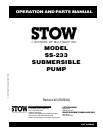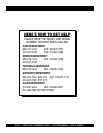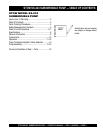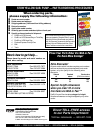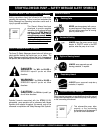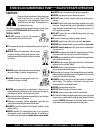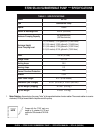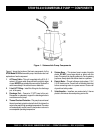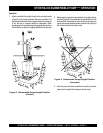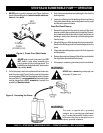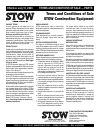
STOW SS-233 SUBMERSIBLE PUMP — OPERATION MANUAL — REV. 2 (05/03/04) — PAGE 9
STOW SS-233 SUBMERSIBLE PUMP — GENERAL INFORMATION
Introduction
The
STOW Model SS-233
submersible pumps is designed to
pump water and is used for the draining (de-watering) of flooded
rooms, drains and fill tanks, power fountains and waterfalls
swimming pool covers, and flat roofs.
A plastic impeller is attached to the output shaft of a 1/2 HP
electric motor which provides adequate power for general
purpose pumping. This submersible pump is supplied complete
with an electric power cable, and a discharge port located at the
top of the pump which accepts a 2-inch hose.
This pump is ideal for portability because of its light weight and
carrying handle. In addition this pump will pump dry to 1 inch.
Built in overload protection protect the electric motor from
overheating.
The pump when in use, should be installed as free standing
(upright position) on its strainer base. A 2-inch discharge hose
(not supplied) should be connected to the discharge port located
on top of the pump. The discharge hose should be adequately
supported to avoid stress on the pump.
For maximum water flow, the discharge hose should be kept as
short as possible, and with minimum elevation above the pump.
Remember as the length and/or height of the discharge hose is
increased, the flow of water will be reduced. Also any reduction
in the hose size, and any fittings such as valves or outlet nozzles,
will restrict the water flow.
To avoid back-siphonage when the pump is switched off, ensure
that the end of the discharge hose is installed above the water
level at the final discharge point.
When the pump is switched off, the water remaining in the hose
will run back through the pump. This can be avoided by placing
a non-return valve in the hose nearest the pump.
NEVER use this submersible pump to pump flammable liquids
or operate in a explosive or flammable environment.
Avoid using this pump in conditions where mud, grit, silt or other
debris are present. These conditions could cause blockage and
cause excessive pump wear.
DO NOT install the pump directly into an area where there is a
heavy build-up of mud, grit, silt or debris. If this condition is present,
install the pump on a platform before operating.
This pump must always be positioned on a platform in an upright
position. NEVER operate the pump by a suspended rope. To
prevent large solids from entering the pump, install a wire mesh
screen or similar barrier around the pump.
If the pump was used to pump water containing mud, silt, use
clean water to flush out the pump after each use.
DO NOT allow the pump to run dry, as this will damage the
pump. During maintenance, dry running is permissible but only
for a few seconds.
NEVER lift the pump by its electrical power cord. ALWAYS lift
the pump by its carrying handle or attached a rope to carrying
handle.
A fully submerged pump in liquid will not freeze, unless the liquid
freezes. DO NOT allow a partially submerged pump to freeze.
The expansion of water freezing in the volute may crack the
pump, causing expensive repairs. If there is any danger of the
pump being subjected to freezing temperatures, Lift the pump
from water and allow it to drain thoroughly.
If the pump jams or the pump rotor locks for any reason,
disconnect the pump from the power source immediately.
Allowing the pump motor to cycle ON and OFF under an overload
condition can burn out the motor.
When replacement of nuts and bolts is required, use only
recommended parts as referenced in the parts section of this
manual. This pump uses
metric
threads. DO NOT use english
measurement threads.



